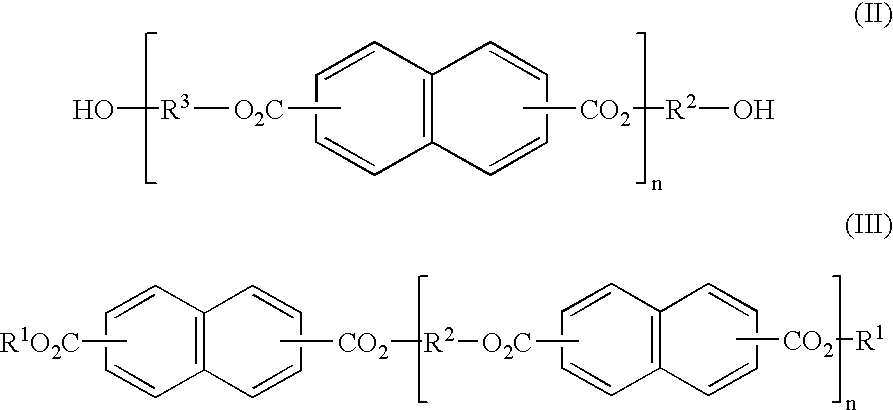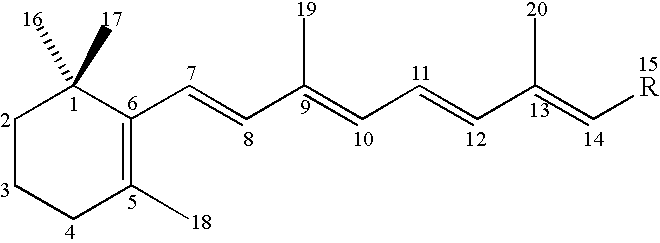Diesters or polyesters of naphthalene dicarboxylic acid as solubilizer/stabilizer for retinoids
a technology of naphthalene dicarboxylic acid and solubilizing/stabilizing polyester, which is applied in the direction of biocide, drug composition, animal husbandry, etc., can solve the problems of tretinoin and isotretinoin being quite irritating, affecting the effect of retinoids, and deteriorating water solutions, etc., to achieve the effect of solubilizing and stabilizing
- Summary
- Abstract
- Description
- Claims
- Application Information
AI Technical Summary
Benefits of technology
Problems solved by technology
Method used
Image
Examples
example 2
0.1% Tretinoin Creme Topical Treatment For Sun-Damaged Skin
This creamy emulsion delivers the maximum therapeutic dose of tretinoin in a moisturizing, emollient base. Emolliency and solvency for the tretinoin is provided by HallBrite.RTM. TQ (diethylhexyl 2,6-naphthalate).
Procedure
1. Oil Phase: In main vessel, combine diethylhexyl 2,6-naphthalate, isododecane, tocopherol and BHT. Add isotretinoin and stir until dissolved. (NOTE: temperature may be raised to 50.degree. C. to speed dissolution.) Add Shea butter and stir until dissolved. Raise temperature to 65.degree. C. Add ceralution H and stir until dissolved.
2. Water Phase: In separate vessel, blend "B" additives and stir to dissolve Allantoin. Heat to 65.degree. C.
3. While homogenizing, add oil phase to water phase. Homogenize for one minute.
4. Remove from heat. Switch to sweep stirring. When temperature falls below 45.degree. C., add Germaben II, then Sepigel and stir to homogeneous creme. Lastly, add cyclomethicone with stirring...
PUM
| Property | Measurement | Unit |
|---|---|---|
| temperature | aaaaa | aaaaa |
| temperature | aaaaa | aaaaa |
| temperature | aaaaa | aaaaa |
Abstract
Description
Claims
Application Information
 Login to View More
Login to View More - R&D
- Intellectual Property
- Life Sciences
- Materials
- Tech Scout
- Unparalleled Data Quality
- Higher Quality Content
- 60% Fewer Hallucinations
Browse by: Latest US Patents, China's latest patents, Technical Efficacy Thesaurus, Application Domain, Technology Topic, Popular Technical Reports.
© 2025 PatSnap. All rights reserved.Legal|Privacy policy|Modern Slavery Act Transparency Statement|Sitemap|About US| Contact US: help@patsnap.com



